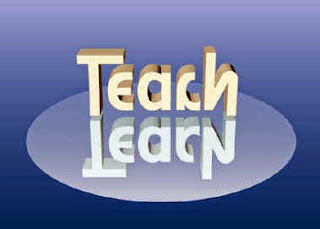First, let me set the scene: I’m on break from teaching college English for the summer. The high schools are still in session, and so I work as a substitute teacher. It is a win / win. Once I get the classes started and working on the assignment their regular teacher has left for them, I get a chance to write.
Today is a nice, sunny day at the end of May. I am covering for a Microsoft Word class, so the students each have a computer in front of them and are working quietly on their assignments.
One of the other classes, I don’t know which, are outside working on some sort of project. Some of the students have sports equipment (footballs, tennis rackets, hockey and lacrosse sticks, and a few tennis balls) and are playing across the courtyard. I can see them from my window.
I am not paying them much attention, until I notice several of them standing around a large tree. This time of the year, it is thick, and filled with leaves and branches. Looking closer, I see that one of their footballs is stuck near the top of the tree—too high up for any of them to climb.
After discussing it over as a group, they step back, and using their one remaining football, try to knock the other one out of the tree. Three attempts later, they are not having any luck. On the fourth attempt, the other football gets stuck—not far from the first one.
Once again the students huddle and talk about what to do. Next, one of the students—a tall one with dark hair and fuzz on his chin—throws one of the tennis rackets at the footballs stuck in the tree. Not surprisingly, the racket catches one of the top branches of the tree and stays there.
At this point, I’m looking around for their teacher, but he is on the other side of the courtyard watching different students play some sort of game.
Seemingly undaunted by their recent failures, the students with the remaining sports equipment start throwing everything they have at what the tree has captured. Within moments, all of the items are now lodged somewhere in the tree—and still out of reach.
Without anything else to hurl at the tree, the students look at each other. It was at that moment when I see the proverbial lightbulbs go on over their heads. They now realize they lost more than just one football to the tree; they lost everything.
Instead of going to their teacher, the students sit around the tree, heads hanging in defeat.
Class ends twenty minutes later. The students leave.
The equipment is still in the tree.

